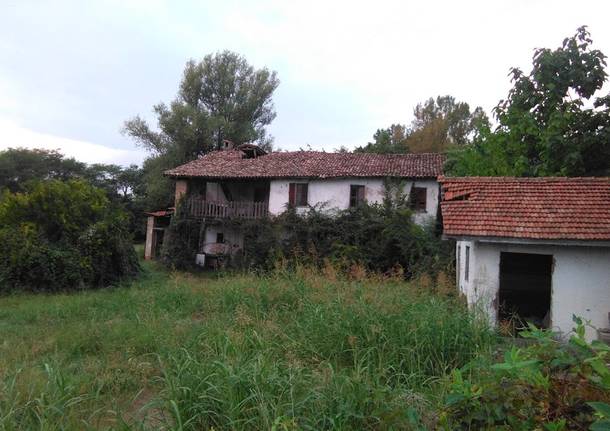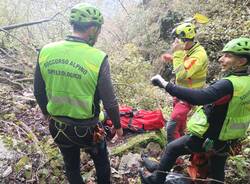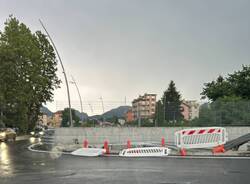Varese, locally sourced, winning the challenge
Exploiting what is left of the glorious agricultural past of Varese’s Castellanze, with a proposal: why not invest in small, “part-time” farms, with valuable animals?

We publish a speech by the agronomist Valerio Montonati, who continues his discussion, for Varese News readers, of the relationship between man and the environment. A small journey that began on the slopes of Monte Lema, and continued with topics such as animal farming and woodland management. (ac)
As I mentioned in the previous article about the disappearance of small livestock farms, also in our town, there was a high presence of little farms in the more outlying Castellanze (castle areas), at least towards the end of their existence: Masnago with Calcinate degli Orrigoni, Lissago, Mustonate and Calcinate del Pesce, Avigno and Velate, with S.Ambrogio, Rasa and Bregazzana; Bobbiate and Casbeno, with Gaggiano and Gaggianello, including Via dei Boderi, which still provides charming rural sights. And then, Capolago with Novellina and Cartabbia; Belforte and Bizzozero, with Cascina Mentasti and San Fermo and Valle Olona, to complete the circle around the town centre, but also with presences in Giubiano, where until late the 1950’s, it was possible to see flocks of sheep grazing on the large meadows that covered the hill.
Indeed, not for nothing, after the Royal Decree No. 994, of 9 May 1929, in 1933, the town had a central dairy (314 members against about thirty currently) and it was organised with a modern civic slaughterhouse (1939 can be seen on the entry house), where it is still possible to see the crumbling ruins, except for a part used to house the town’s stray cats, near Via Tonale, at the crossroads with Via Podgora. Thus, daily supplies of milk and, at least to a certain extent, of meat, as well as milk derivatives, of course, such as butter, and some types of local cheese, were guaranteed.
It should be noted that, in addition to maintaining a heritage of wonderful, stable meadows, city farms also managed many, large orchards (the fabulous peaches of Casbeno are extremely tasty, as my poor father would often remind me), and produced every kind of vegetable, with which to supply the town centre in the historic covered market, which, alas, was sacrificed to give way to the pseudo-theatre (which, in turn, was replaced, after many decades, by another foolish deed of Varese, the “late” Social theatre, which was stupidly demolished, in the fateful 1950’s).
In view of the current fire emergency affecting our beloved mountain, it is also important to highlight the action that this widespread presence of animal rearing had on managing the tons of leaves that fall, in autumn, from the chestnut trees on its slopes, in real chestnut woods, around the many stable meadows, or in more dense and widespread chestnut groves, and form dense layers of dry material that constitutes a fire hazard. Large quantities of this material, in the form of dense, uniform fodder, was collected and pressed into gaskets or into carts and, finally, stored in some corners of the farmstead to be used gradually as bedding for the animals in stalls, and subsequently becoming that wonderful fertiliser that guaranteed everlasting fertility for the meadows, vegetable gardens and orchards.
In addition to being cut periodically, the woods had few leaves on the ground, and due to a constant use for forest operations, with limited undergrowth and, therefore, less susceptibility to fires, whether they were of natural origin (rare), or linked to the practice of burning the dry meadows or stubble from the grass crops (maybe the most frequent), in other words, arson (which is practically non-existent, given that the crazy arsonists and mythomaniacs, are practically unheard of).
Lastly, a large and fierce presence of professional fishermen, as I explained last year, in a meeting (on the Isolino Virginia) about the condition and fishing prospects of Lake Varese, meant there was a constant supply of high quality, fresh fish (lavaret, perch, zander, pike, tench and bleak, are the best known and appreciated species) to complete a genuinely local supply, as we would like to propose now.
What remains of all of this today? Actually not much: there are very few animal farms, with dairy cows and/or goats, complete with sties with pigs that exploit the residues of cheese making (whey enriched with cereal flours and vegetable scraps from the garden), with laying hens and rabbits often to satisfy the family demand rather than that of an external clientele.
Excluding Casciago, where, on the border with Varese, there is at least one important company with excellent meat, milk and dairy production, we find a company in Val Luna, as we go down from Masnago towards Schiranna, or climbing to Bobbiate along Via Corridoni. There is another surviving in Capolago, at the bottom of Via dei Boderi. Few other farms are able to keep going, in this apparent war, between Bizzozero, Bustecche, San Fermo and the Olona Valley.
Except for some rare and not recent experiences of modern horticulture, based on organic methods, such as a well-known company in Calcinate del Pesce or fruit orchards that concentrate on small woodland fruits, which, in fact, have supplanted the traditionally local fruits, on the historic Casbeno and Bobbiate terracing and fruit that my father praised so much, associating them with the memory of his youth, only a few horticultural companies manage to hold out, while the traditional fruit-growing, of apples, pears, peaches, apricots and plums, is only a memory of a generation that is quickly disappearing. Not to mention the professional fishermen and fish of our once wonderful and prodigious lake, the former, who have all but disappeared, and because of their shortage, the latter.
Now what?
Certainly, it is necessary to support the farms still operating in the territory around Varese, those that are adjacent and those that share the slopes of the Campo dei Fiori down to the lake. Encouraging the foundation of new companies that, for example, can relaunch sectors such as horticulture and fruit growing, perhaps recovering open spaces, often terraced, or protected environments such as the historic greenhouses of nursery gardens, which were once abundant and competitive, in Varese and its surroundings, but have now been relegated to marginal crops if not to complete decay.
Finally, I’ll try to launch an idea for the rebirth of high quality, local animal farming that can, in its small way, also contribute to managing the woods on our beloved mountain. In the culinary field, the tradition of the “fat ox” is returning to fashion with exceptional meats that can support the famous Piedmontese boiled meats, or with well-marbled T-bone steaks and entrecotes, such as the well-known Kobe beef, which is sold at jewellery-store prices, but which can be compared, without fear, with the meat of our Piedmont Chianine, Romagnole, and other breeds (for more information, see the recent documentary “Steak Revolution”, by Franck Ribière).
Why not think, then, with a view to part-time agriculture, about promoting, with special announcements as part of a RDP (Rural Development Program funded by the EU, that, for the first time, sees our region in difficulty spending €1.2 billion!!) the reopening of small suburban animal farms (on the edge of the historic castle areas) raising a maximum of two or three oxen (in order not to create problems of coexistence with the residents) for a few years (at least three, according to the rules, but up to 12/13, as stated in the documentary mentioned in the case of a Spanish breeder, with results, also in culinary terms, that were, to say the least, “touching”) and rewarding, with specific economic incentives, breeders who use the leaves from the woods for the animal’s litter instead of wheat or rice straw from the fields?
It might be a happy return to the past, providing an additional income to increasingly difficult situations and which would provide concrete help to maintain or recover our landscape and, why not, a valuable contribution to safeguarding our woods.
TAG ARTICOLO
La community di VareseNews
Loro ne fanno già parte
Ultimi commenti
Emanuele Zanetti su Motociclista di Ferno ucciso da un orso in Romania
GrandeFratello su Superate le 700 firme per la petizione sul recupero del Grand Hotel Campo dei Fiori di Varese
Felice su Motociclista di Ferno ucciso da un orso in Romania
Stefano64 su Neil Young torna dopo l'enorme successo di Harvest: ma non è il disco che tutti si aspettano
Alessandro Zanzi su Superate le 700 firme per la petizione sul recupero del Grand Hotel Campo dei Fiori di Varese
Felice su La bibliocabina, la panchina e il cane che fa pipì. A Fagnano Olona scoppia la polemica
















Accedi o registrati per commentare questo articolo.
L'email è richiesta ma non verrà mostrata ai visitatori. Il contenuto di questo commento esprime il pensiero dell'autore e non rappresenta la linea editoriale di VareseNews.it, che rimane autonoma e indipendente. I messaggi inclusi nei commenti non sono testi giornalistici, ma post inviati dai singoli lettori che possono essere automaticamente pubblicati senza filtro preventivo. I commenti che includano uno o più link a siti esterni verranno rimossi in automatico dal sistema.